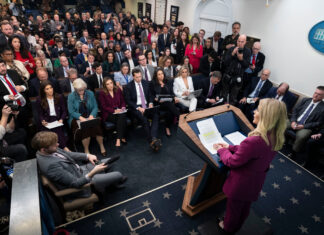2016 looks like it will be a rocky years for investors.

U.S. economic growth in 2016 was cut to 2.4%, a decrease from a previous estimate of 2.8%, according to a report by Goldman Sachs in September 2015. On a global level, GDP growth was cut from 4.3 % to 3.7% primarily due to a slowdown in China and prospects for gradually rising U.S. interest rates. Rising U.S. rates have not occurred for about a decade. Similarly, Barclays bank said investors should prepare for “mediocre” returns in 2016, while some economists are even predicting another recession.
A low-return environment is unwelcome news as more people enter retirement and for those already not working who face a wall of fixed expenses. Every day, an estimated 10,000 Baby Boomers (those born between 1946 and 1964) enter retirement at age 65, according to the Pew Research Center. These are people who are exiting the workforce and will now have to test whether their lifelong savings disciples worked in conjunction with their investment acumen.
But for the majority of Americans, the size of their retirement portfolios will not be enough, according to a number of authoritative sources. The Federal Reserve reports the median balance of retirement accounts held by Americans saving for retirement totals less than $60,000. In more specific terms, the Fed found that the median account value for those 35- to 44-years-old is a scant $42,700, while the median value for those 55- to 64-years-old is $103,000
According to a paper by Boston College’s Center for Retirement Research, about 50% of all households are at risk of not being able to live a financially secure retirement, up from about one third in 1983. This dismal projection is based on the College’s National Retirement Risk Index that compares projected income replacement rates for working-age households aged 30-59 to target income replacement rates. These income replacement rates would allow households to have the same consumption levels after they retire as they did before. The Index measures the percentage of households that fall more than 10% below their target.
This paper, “Falling Short: The Coming Retirement Crisis and What We Can Do About It,” Alicia Munnell, lists a number of reasons for the retirement income shortfall (the demise of pension plans, higher medical costs, longevity, changes in Social Security, taxation of benefits), but the net effect is that even with 401(k)s in place, the retirement income shortfall is growing.
This is a problem which has been building for years. Among the paper’s key conclusion is that “As a result, in 2013, the typical working household approaching retirement with a 401(k) had only $111,000 in combined 401(k) and IRA balances. This amount translates into less than $400 per month, adjusted for inflation, which will not provide a sufficient supplement to Social Security benefits.”
In more dramatic terms, the study found that the median 401(k) balance for people with 401(k)s was only $111,000.
401(k)/IRA Balances for Median Working Household with a 401(k),
Age 55-64, by Income Quintile, 2013
| Income Range (Quintiles) | Median 401(k)/IRA Balance | Percent With 401(k) |
| Less than $39,000 | $13,000 | 22% |
| $39,000-$60,000 | $53,000 | 48% |
| $61,000-$90,000 | $100,000 | 60% |
| $91,000-$137,000 | $132,000 | 65% |
| $138,000 or more | $452,000 | 68% |
| Total | $111,000 | 52% |
Source: Alicia Munnell’s calculations from U.S. Board of Governors of the Federal Reserve System, Survey of Consumer Finances (2013). Cited in the paper “Falling Short: The Coming Retirement Crisis and What We Can Do About It,” Alicia Munnell, April 2015.
While 401(k) balances are not a family’s only assets, (they exist alongside home equity, savings, Roth IRAs, pensions, etc.) 401(k)s are a bellwether of liquid assets and household savings patterns. The largest asset for most households in home equity (less the mortgage amount due to the lender), but this can only be tapped via home equity loans.
A 2014 study from the Center for Economic Policy and Research found that the median net wealth of households headed by someone between the ages of 55-64 and approaching retirement was $165,700 in 2013, a decrease from $177,500 in 1989. The middle sample of homeowners in this age group had a 55% equity stake in their homes in 2013, down from an 81% in 1989. The non-housing wealth of this group in 2013 averaged $89,300, down from a peak of $160,700 in 2004, showing the result of the 2007 recession on both equity portfolios and real estate.
Unfortunately, the Center for Retirement Research paper falls far short in its recommendations about how to correct the retirement problem. The paper lists the well-trodden, traditional politically-correct suggestions—work longer, save more and use home equity loans to fill the retirement income gap.
Working for Better Solutions to the Retirement Crisis
The suggestions contained in this otherwise thorough academic paper are politically timid and are not the best solutions to the retirement crisis since they only ask American workers to sacrifice more in retirement than they did when they were working. Again, this paper, like most of the “401(k) education” offered by corporations to their employees approaching retirement, the lessons all focus on manipulating the very few monetary variables open to workers.

In these corporate “educational” settings, facilitators avoid any discussions about the lack of overall company wage increases, corporate policies that decrease benefits and shift payments to workers, the pay of top executives compared to average workers, corporate lobbying activities that frequently develop policies that are anti-average worker, and federal and state fiscal policies that work against the economic benefit of average Americans.
In short, these 401(k) “educational” programs have the potential to become excellent starting places to embolden workers to see the world and their company in new refreshing ways. But that opportunity is wasted when these “educators” frame the retirement crisis issue in ways that only build the feeling of financial hopelessness among their own 401(k) participants.
Given the presidential election focus on national policies, correcting the nation’s dismal retirement savings prospects must address the real issues of wage stagnation, the growing income disparity and the greed of the top 1%. For instance, how can a 401(k) “educational” class not mention the fact that 0.1% of American families enjoy almost as much as wealth 90% of the rest of the country combined, according to Democratic presidential candidate Bernie Sanders (D-Vt.) and verified by the Washington Post. Doesn’t this concentration of wealth impede economic and political opportunities for the majority of Americans?
However, when there are no increases in wages, savings rates and retirement portfolios stagnate. Retirement savings rates undoubtedly can be accelerated via combining higher savings rates with the magic of compound interest, so boosting the savings rate gives investors better odds of building portfolio wealth over time.
Payroll tax rates should also drop to increase take-home pay. Those diligent saver-investors must also find low-expense mutual funds or exchange traded funds (ETFs) to invest in since fees and expenses are the only variable in the investment world they can directly control.
It’s also important to get investment advice from an advisor who openly displays their practice as one which puts the needs of the client-investor ahead of their own. Investors must ask if the advisor adheres to the fiduciary standard and if so, they should ask for a signed statement from them saying that they will put the clients’ interests ahead of their own. Currently, only Registered Investment Advisors (RIAs) who are regulated by the Securities and Exchange Commission or state securities regulators adhere to the fiduciary standard, which means they must act in their clients’ best interests.
To protect themselves, investors have to ask their financial representatives tough questions, but these are tough times. No one will protect your money like you do.
Unfortunately, the financial services industry has done too little to convince their own customers that they elevate their interests ahead of the investment firm and its own financial planners or financial advisors. Now, as the financial services industry is engaged in an all-out lobbying and PR campaign to eliminate the fiduciary standard advocated by the U.S. Department of Labor, it’s time for investors to protect themselves.
The lesson that lower future economic growth projections, combined with lower returns on investment portfolios, means that most people will have to get by on less income. Unless something dramatic happens in the political policy world, this will become the new American way.











